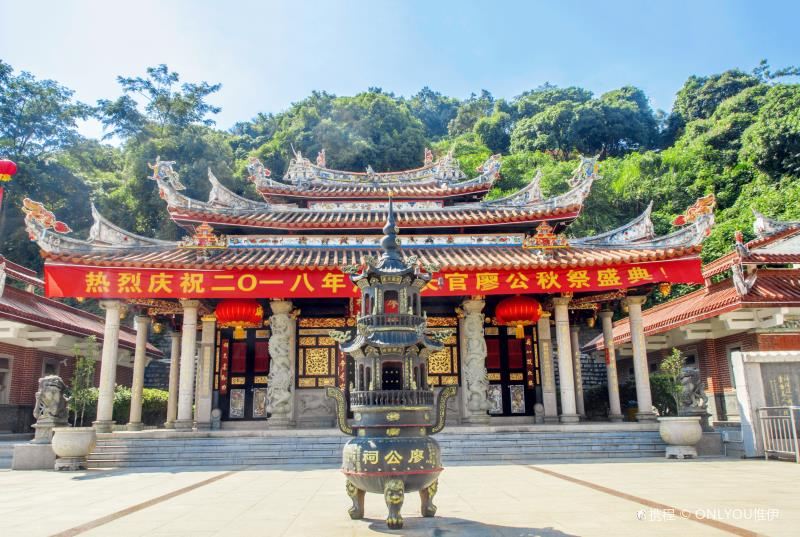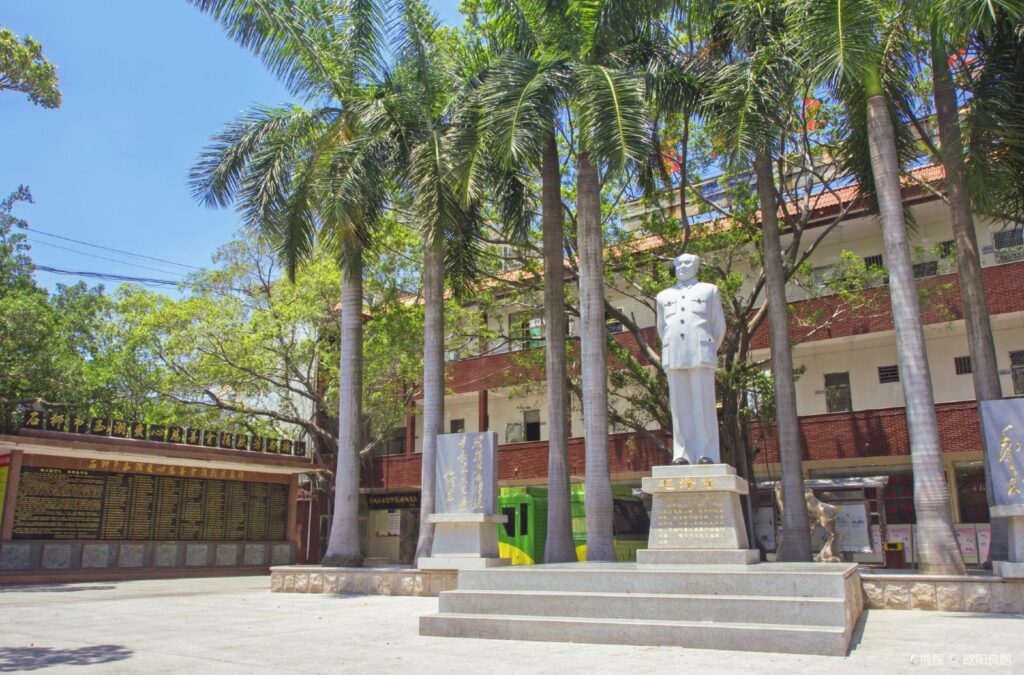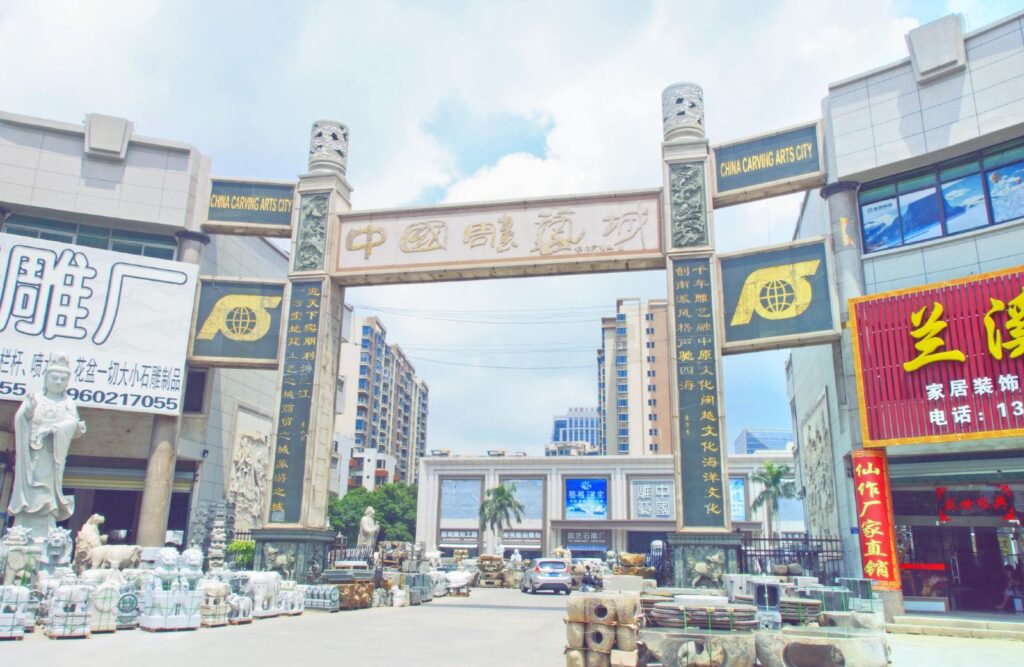The tombstone is inscribed with ‘Imperial Qing Guanglu Doctor, Crown Prince Shaofu, General of Jinghai, and Xiangzhuang Shi Gong, bestowed with a burial ground’, with the sides engraved ‘First-rank Lady Wang, First-rank Lady Huang’. This tomb, constructed of stone, features expanding wings and consists of three chambers. The tomb faces north to south, covering an area of 68,500 square meters. The cemetery area, from north to south, is divided into five terraces, successively holding four pairs of civil and military attendants, horses, tigers, sheep, lions, a pair of Huabi, and the imperial edict stele pavilion from the 37th year of Kangxi’s reign (1698), the imperially bestowed sacrificial burial archway, and the stele pavilion with a turtle-shaped base.
Shi Lang (1621-1696), styled Zunhou, and known as Zhugong, was a native of Ya Kou in Jinjiang. He was a man of extraordinary appearance, extraordinary strength, adept at leading troops, and ‘versed in maritime affairs’, making him a general with strategic vision. Shi Lang passed away in the 35th year of Kangxi’s reign (1696) while in office. In recognition of his merits, the Qing court ordered the construction of a temple in his hometown (Ya Kou Village, beside Shenhu Bay in Jinjiang City), which has been restored by later generations and is now relatively well-preserved. The opening hours and specific business status are subject to the day’s opening conditions.Tomb of General Shi Lang: A Historical Landmark in Quanzhou
The tombstone is inscribed with ‘Imperial Qing Guanglu Doctor, Crown Prince Shaofu, General of[...]









